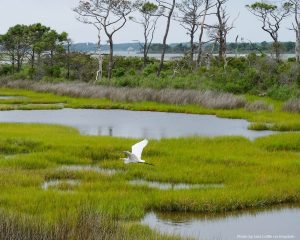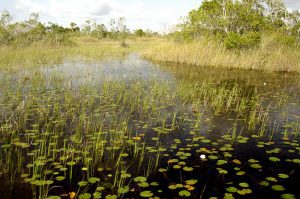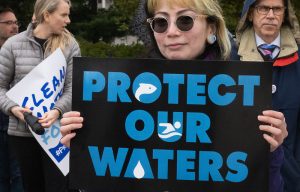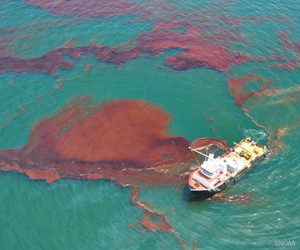Despite the many benefits of wetlands, they have long been under threat in many countries around the world, including the United States.
Why Are We Losing Wetlands?
By the mid-1980s, the United States had less than half of the wetland coverage than it had prior to European colonization, including six states with over 85% of their wetlands lost. While legal protections for wetlands were bolstered during the environmental movement of the 1970s and 1980s, these laws are under threat themselves.

The 2023 Supreme Court decision Sackett v. EPA stripped back the legal basis for many federal wetland protections, leaving hundreds of millions of wetland acres vulnerable to being destroyed. Though some U.S. states have enacted their own policies against wetland loss, wetlands across the country still risk destruction in favor of agricultural and commercial interests.
Wetlands Lose Out to Agriculture
In the 18th century, European settlers perceived wetlands as swamps that bred disease and inhibited frontier expansion, and colonists eagerly began dredging and filling wetlands so the land could be used for agricultural space. This process accelerated in the 19th century, when the United States Congress gave control of federal wetlands to states that promised to drain the wetlands and convert them to other uses; millions of acres of wetlands were destroyed, including 20 million acres in the Everglades alone.
As the United States population continued to grow and better agricultural technology allowed for more efficient drainage, wetland loss proceeded rapidly in the late 19th century and into the early 20th century. During this time period, wetland destruction spread to new parts of the continent: the drainage of California’s Central Valley started during this time period, beginning a long process of massive disruption to that ecosystem in favor of farmland.
The destruction of wetlands remained federal policy through the 1950s and 1960s, when Congress encouraged wetland drainage that resulted in the loss of 550,000 acres of wetland annually.
Federal Wetland Protections Begin
It wasn’t until the passage of the Clean Water Act in 1972 that wetlands gained significant federal legal protections: the Act established a program regulating the dredging of waters, including wetlands. Further laws, such as the Emergency Wetland Resources Act of 1986, continued the advancement of legal protections for wetlands.

In 1989, the EPA begin implementing a “no net loss” policy for wetlands, which has continued under every subsequent administration. Under this policy, projects that destroy wetland acreage must either create an equal amount of new wetland acreage elsewhere or protect and enhance the functionality of other existing wetlands. Though this policy has helped reduce wetland loss nationally, discrepancies in what constitutes a wetland have led to unclear assessments of the success of this policy.
Current Legal Threats to Wetlands
The definition of wetlands is at the heart of the recent legal battle concerning federal wetland protections. The EPA derives its authority to regulate wetland dredging and filling through the Clean Water Act’s applicability to “navigable waters,” which the Clean Water Act defines as “waters of the United States,” including adjacent wetlands. Previous Supreme Court decisions, notably Rapanos v. United States (2006), had created competing legal definitions to decide which wetlands could be considered “waters of the United States.”
The EPA was in charge of interpreting this definition and deciding which wetlands were subject to permitting processes under the Clean Water Act, and ultimately administered the Clean Water Act under the definition that applied wetland protections to more land.
Sackett v EPA Challenges Wetland Protections
 Sackett v. EPA (2023) ultimately challenged this definition in court. The Sacketts, a couple looking to build a home on their land in Idaho, sued the EPA after their construction was halted on the basis that they had not acquired the necessary permits from the EPA because they would be developing on wetlands. The Sacketts sued the EPA, arguing that its interpretation of which wetlands are considered “navigable waters,” and therefore protected under the Clean Water Act, was overly broad because it protects wetlands that lack a continuous water connection to other waters of the United States.
Sackett v. EPA (2023) ultimately challenged this definition in court. The Sacketts, a couple looking to build a home on their land in Idaho, sued the EPA after their construction was halted on the basis that they had not acquired the necessary permits from the EPA because they would be developing on wetlands. The Sacketts sued the EPA, arguing that its interpretation of which wetlands are considered “navigable waters,” and therefore protected under the Clean Water Act, was overly broad because it protects wetlands that lack a continuous water connection to other waters of the United States.
In a 5-4 decision, the Supreme Court ruled in favor of limiting the definition of “waters of the United States” to the stricter definition, saying that wetlands are only subject to EPA permitting under the Clean Water Act if they have a continuous surface water connection to another water such that there is “no clear demarcation” between the wetland and the water.
The Impact of the Sackett v EPA Ruling
This ruling functionally removed federal protections for more than half of the remaining wetlands in the United States. Though some of those wetlands are protected under state-level regulations, the patchwork of state laws protecting wetlands is far from comprehensive. More than half of states have no laws protecting wetlands at all. The recency of this ruling means that the long-term effects of Sackett v. EPA have yet to be seen. But with the loss of Clean Water Act protections for over 60 million acres of wetlands, it’s likely that the United States will see an acceleration in wetland degradation and loss.
Looking to the Future for Wetlands
Sackett v. EPA is part of a broader legal strategy from conservative legal groups looking to reduce federal oversight of environmental protections. Other recent Supreme Court cases, including 2024’s Loper Bright Enterprises v. Raimondo, have eroded federal agency control over interpreting and enacting major environmental protection statutes like the Clean Water Act. Other federal protections for wetlands, such as the “Swampbuster” program that discourages farmers from developing wetlands for agriculture, are facing legal challenges as well. Conserving U.S. wetlands for future generations will require a concerted legal effort to bring back protections on a federal level.
Image credits: Wetlands at Assateague Island (Photo by Sara Cottle on Unsplash); Everglades National Park (20120105-OC-AMW-0516 by US Department of Agriculture is Public domain); Protestors at Sackett v EPA (First Monday in October by Victoria Pickering is licensed under CC BY-NC-ND 2.0)



